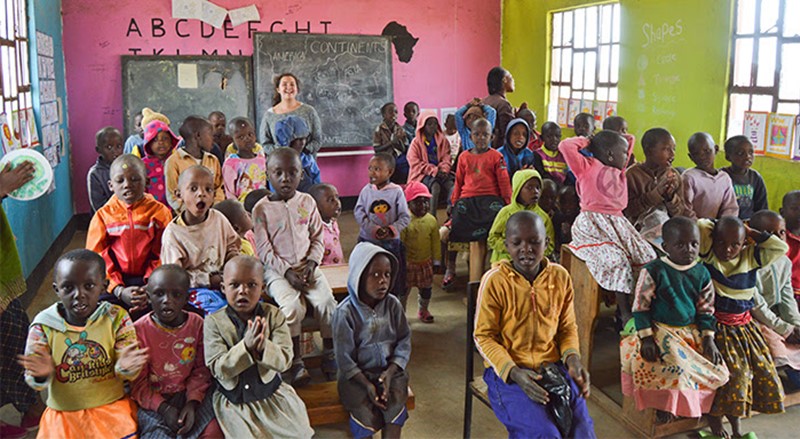
TORONTO – September 13, 2017 – As schools around the world re-open after the summer break, Projects Abroad's teaching volunteer programs serve as a helpful resource in countries with high student-to-teacher ratios.
Projects Abroad sends teaching volunteers to countries in developing parts of the world, including placements in Africa, Asia, Latin America, the Caribbean, and the South Pacific. High student-to-teacher ratios is a serious issue in several of the countries where volunteers are placed. In Tanzania, for example, some schools can experience up to 200 students per teacher. In Togo, some schools have class sizes ranging from 60 to 100 students. Countries including Ethiopia, Kenya, Cambodia, and Madagascar have national averages of well over 40 students per class.
These statistics present a vastly different schooling experience for the average child in comparison to those of children in Canada, where class sizes vary across provinces but remain low: in British Columbia class sizes can range between 20-25*, in Quebec the average is at 14 students per teacher*, and fewer than 23 students are allocated to individual teachers in Ontario*.
"In some of our destination countries, certain students struggle and fall behind because they do not receive the personalized attention and support they need while in large classes," says Jenny Puyo, Project Abroad's Head of Program Development. "Our volunteers, as teaching assistants, can help provide that additional support, whilst also helping the local teachers with class management, including discipline and motivation."
Teaching volunteers do not only contribute to a school's teaching force in numbers, as Projects Abroad encourages their volunteers to introduce new, creative, and interactive teaching techniques at their placements. Fresh teaching concepts can have a lasting impact in the lives of the students who volunteers work with directly, and also future learners, as teachers often incorporate these new techniques in their own lessons. Volunteers can also leave behind physical materials to improve learning for years to come, such as posters, flash cards, and even classroom murals, helping contribute to Projects Abroad's long-term goals for each program.
To impact a community abroad through teaching, volunteers can choose to travel alone or in groups through Projects Abroad's customized group trips option. They can also choose to teach subjects other than English, such as math, science, and geography, and can even consider a more active option such as teaching physical education or coaching a sport.
Each country has its own set of issues often caused by challenging socio-economic circumstances. Projects Abroad has identified where it can make a positive contribution to improving education in these countries, and invites those passionate about education to join in impacting the world through teaching.
*Source: Provincial Reports, British Columbia
*Source: Education Indicators, Quebec
*Source: Class-Size Tracker, Ontario Ministry of Education


